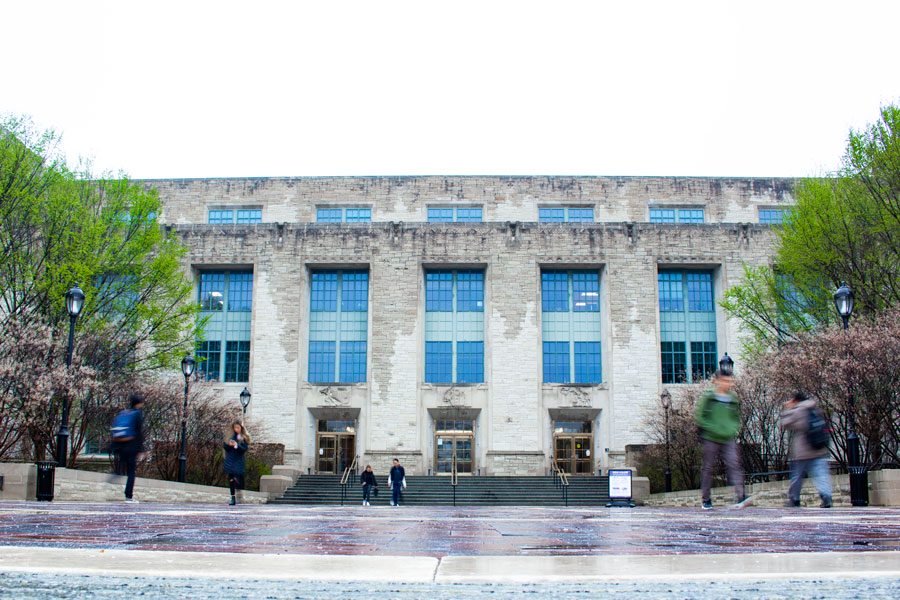NU astrophysicists trace locations of intense radio blasts to galaxies’ spiral arms
Daily file photo by Evan Robinson-Johnson
The Technological Institute. The research provides context that helps scientists uncover what causes fast radio bursts.
May 23, 2021
Northwestern astrophysicists helped trace the locations of fast radio bursts to their origins using NASA’s Hubble Space Telescope, according to a University news release.
In a new study, a team of astronomers from around the world found that these quick, powerful blasts originate in the arms of spiral galaxies. That background helps scientists uncover the cause of these mysterious bursts.
“We don’t know what causes (fast radio bursts), so it’s really important to use context when we have it,” physics and astronomy Prof. Wen-fai Fong, a co-author of the study, said. “Because spiral arms are signs of stars being born, this was a surprise, offering a major clue that (fast radio bursts) must correlate with star formation.”
Although fast radio bursts flare and disappear within milliseconds, they produce more energy than the sun does in one year. Astronomers have discovered about 1,000 fast radio bursts since 2007, but have only been able to trace about 15 of them to distinct galaxies.
The research helped scientists eliminate other possible origins of fast radio bursts, now speculating that they could stem from magnetar outbursts — blasts from massive neutron stars with ultra powerful magnetic fields.
The study, set to be published in The Astrophysical Journal, was supported by NASA and the National Science Foundation.
As research into fast radio bursts continues, Fong said she’s curious to see if all fast radio bursts originate within spiral galaxies or if there will be a wider range of locations.
“It’s a really new, exciting field with limited observations,” Fong said. “We’re paving the way to learning more about this cosmic mystery.”
Email: [email protected]
Twitter: @jacquygermain
Related Stories:
— NU astrophysicists help develop most realistic, largest-ever star formation simulation
— SpaceX president Gwynne Shotwell to deliver class of 2021 commencement address
— Study finds gender gap in social media networking outcomes for physicians


